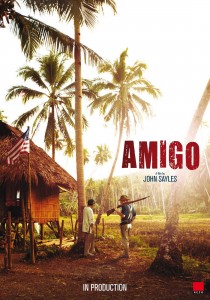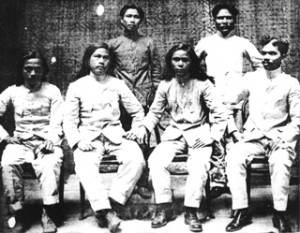
Movie: Amigo (2010) Amigo is a 2010 American drama film written and directed by John Sayles. The film takes place in the Philippines in 1900 during the Philippine–American War. It is one of only a small handful of films directed by an American to address the war. Plot Amigo centers on Rafael Dacanay, cabeza of the barrio of San Isidro in a rice-growing area of Luzon. His brother Simón, head of the local guerilla band, has forced the surrender of the Spanish guardia civil outpost and charged Rafael with the task of imprisoning the guardia Captain and the barrio’s Spanish friar, Padre Hidalgo, in the name of the revolutionary government. But when the American troops chasing General Aguinaldo arrive, the Spanish officer and Padre Hidalgo are freed, and a garrison under the command of Lieutenant Ike Compton is left to ‘protect’ the barrio. The American occupation policy now changes from ‘hearts and minds’ to ‘concentration’ (what was called ‘hamletting’ during the Vietnam war) and Rafael has to answer to both the Americans and the Filipino patriots, with deadly consequences. Cast • Chris Cooper as Col. Hardacre • Garret Dillahunt as Lt. Compton • DJ Qualls as Zeke • Yul Vàzquez as Padre Hidalgo • Joel Torre as Rafael • Lucas Neff as Shanker • James Parks as Sgt. Runnels • Dane DeHaan as Gill • Stephen Taylor as Pvt. Bates • Rio Locsin as Corazon • Jemi Paretas as Zuniga • Bill Tangradi as Dutch • Bembol Roco as Policarpio • Ronnie Lazaro as Simon • Irma Adlawan as Josefa Press Cinematical reports that the film was once titled Baryo, and that the idea for it came from a yet-to-be-published novel Some Time in the Sun, detailing U.S. imperialism in the Philippines. The book will actually be called A Moment in the Sun, though the unrealized screenplay which inspired it was called Some Time in the Sun. Distribution Amigo will show on September 14 at the 2010 Toronto International Film Festival. It will also screen at the San Sebastián International Film Festival and the Rio de Janeiro International Film Festival. In North America, the film will be released on August 20, 2011 by Variance Films. From Wikipedia … [Read more...]

















